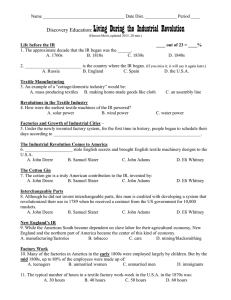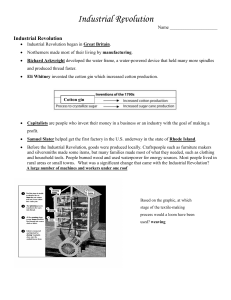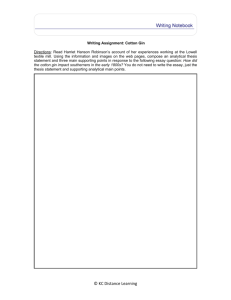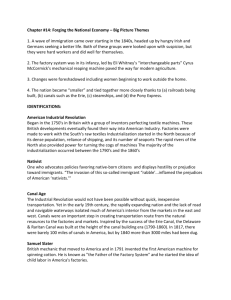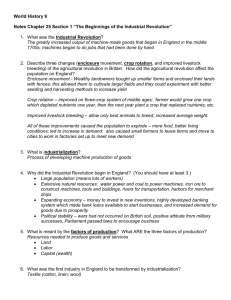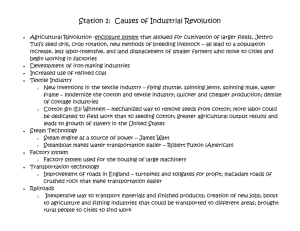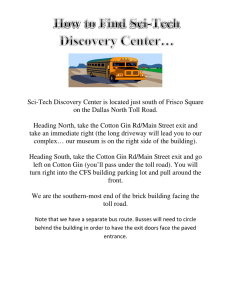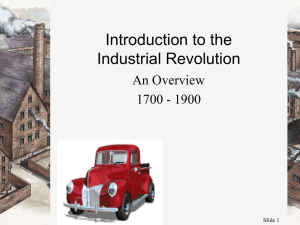American Pageant * Chapter 14 pp
advertisement
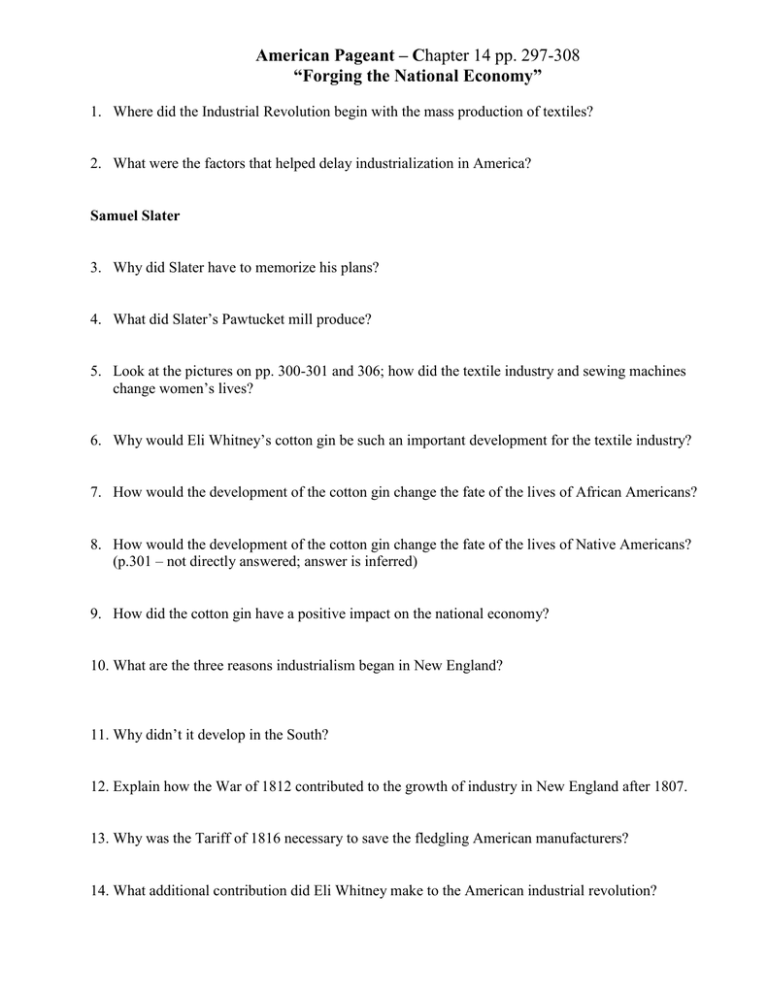
American Pageant – Chapter 14 pp. 297-308 “Forging the National Economy” 1. Where did the Industrial Revolution begin with the mass production of textiles? 2. What were the factors that helped delay industrialization in America? Samuel Slater 3. Why did Slater have to memorize his plans? 4. What did Slater’s Pawtucket mill produce? 5. Look at the pictures on pp. 300-301 and 306; how did the textile industry and sewing machines change women’s lives? 6. Why would Eli Whitney’s cotton gin be such an important development for the textile industry? 7. How would the development of the cotton gin change the fate of the lives of African Americans? 8. How would the development of the cotton gin change the fate of the lives of Native Americans? (p.301 – not directly answered; answer is inferred) 9. How did the cotton gin have a positive impact on the national economy? 10. What are the three reasons industrialism began in New England? 11. Why didn’t it develop in the South? 12. Explain how the War of 1812 contributed to the growth of industry in New England after 1807. 13. Why was the Tariff of 1816 necessary to save the fledgling American manufacturers? 14. What additional contribution did Eli Whitney make to the American industrial revolution? Interchangeable parts 15. What invention became the foundation of the ready-made clothing industry in the late 1800s? Elias Howe/Isaac Singer 16. Explain the impact of the following on industrialization: patent protection: limited liability: Samuel Morse 17. What conditions existed for industrial workers that might have justified the term “wage slaves?” 18. Describe the goals and demands of working men in the 1830s and 1840s. 19. What were the arguments used by owners to fight against the 10 hour day? 20. What actions did laborers use to obtain their goals? Were these actions successful? 21. Compare the pictures on p. 304, 306 and 309. Use these pictures to describe three changes in the lives of workers as industrialization expanded. Lowell Mill system 22. What changes occurred in the working lives of women in the early 19th century? Catherine Beecher “cult of domesticity” Women’s sphere 23. Describe changes to: families- marriagechildrearing24. Is there evidence that women were exerting greater control over any area of their lives? 25. How did the face of the West change in the first half of the 19th century? 26. What forms of “corn” were easier to transport than the bulky grain itself? 27. In what two ways did John Deere’s steel plow help western farmers? 28. What was Cyrus McCormick’s “most wondrous contraption”, and what did it do? 29. How did McCormick’s machine revolutionize the economy of the West? 30. How did transportation limit the growth of the Western economy? Skip from p. 309 to p. 317 31. How did the “market revolution” change the national economy? Charles River Bridge v Warren Bridge 32. Explain how the Charles River Bridge case represents a change from the contract rulings of the Marshall court. 33. How did commercial expansion (Market Revolution) affect families and especially women? 34. How did commercial expansion (Market Revolution) affect socioeconomic class differences? John Jacob Astor 35. By 1850 how true were the myths of “social mobility” and the notion of America as a “land of opportunity”?



